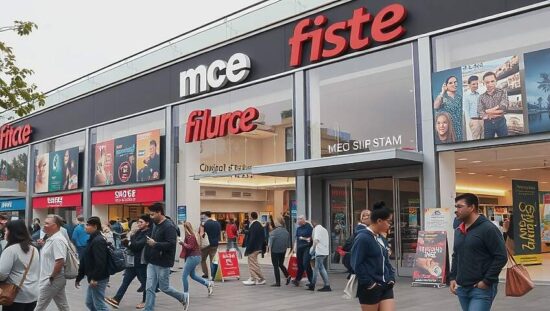The German Council of Shopping Places (GCSP) has released a concerning internal report detailing a significant surge in criminal activity within shopping centers and retail properties across Germany. The document, obtained and reported by “Welt” paints a picture of escalating violence, repeat offenders and a perceived link to migration, prompting renewed political debate over public safety and urban development.
The GCSP, representing approximately 90% of Germany’s shopping centers, specialist retail parks and large-scale commercial properties, surveyed representatives from 1,105 locations, including 248 shopping centers, 99 specialist retail parks and 758 large-scale properties incorporating food retailers and other tenants. The report indicates a 32% increase in incidents documented in 2024 compared to 2023. This figure is likely an underestimate, given the acknowledged “dark figure” of unreported crimes.
According to the report, surveyed businesses are reporting an “increased danger level” stemming from a number of concerning trends. A noticeable escalation in aggression, a rise in repeat offenders and a reportedly increasing proportion of perpetrators with a migrant background are being cited. GCSP General Secretary Ingmar Behrens anticipates a further deterioration in 2025, based on preliminary feedback.
Specific crime categories witnessed alarming increases. Incidents involving knives or tools rose by nearly 11%, reaching 2,905 occurrences. Drug consumption reports jumped 45% to 1,389. Injuries to security personnel, employees and visitors increased by 25%, with 235 incidents documented. Bomb threats experienced a 50% surge, totaling 46, while ATM bombings rose to eleven – also representing a roughly 50% increase. Vandalism (945 cases), gang activity (611), threats to visitors (458) and incidents of sexual harassment/rape (105) also remain significant concerns.
The escalating levels of crime are forcing shopping centers to significantly increase security measures, resulting in a 21% rise in security expenditure, totaling €41 million, driven in part by rising wage costs.
While GCSP officials acknowledge that the number of incidents, when considered against the millions of daily visitors to these properties, remain statistically low – “the probability of winning the lottery millions is higher than being the victim of a knife attack” – they emphasize the profound impact of each event on public perception and employee well-being, contributing to a “vague feeling of anxiety.
The report’s findings are adding fuel to the ongoing “urban landscape” debate ignited by CDU leader Friedrich Merz, who has been vocal about concerns regarding crime and public order in urban areas. Behrens has stressed that the experiences within and around shopping centers are an essential component of this discussion and must be explicitly acknowledged to effect meaningful change. The report is likely to intensify pressure on the German government to address issues related to public safety and perceived societal trends while sparking further debate regarding integration and urban development policies.





